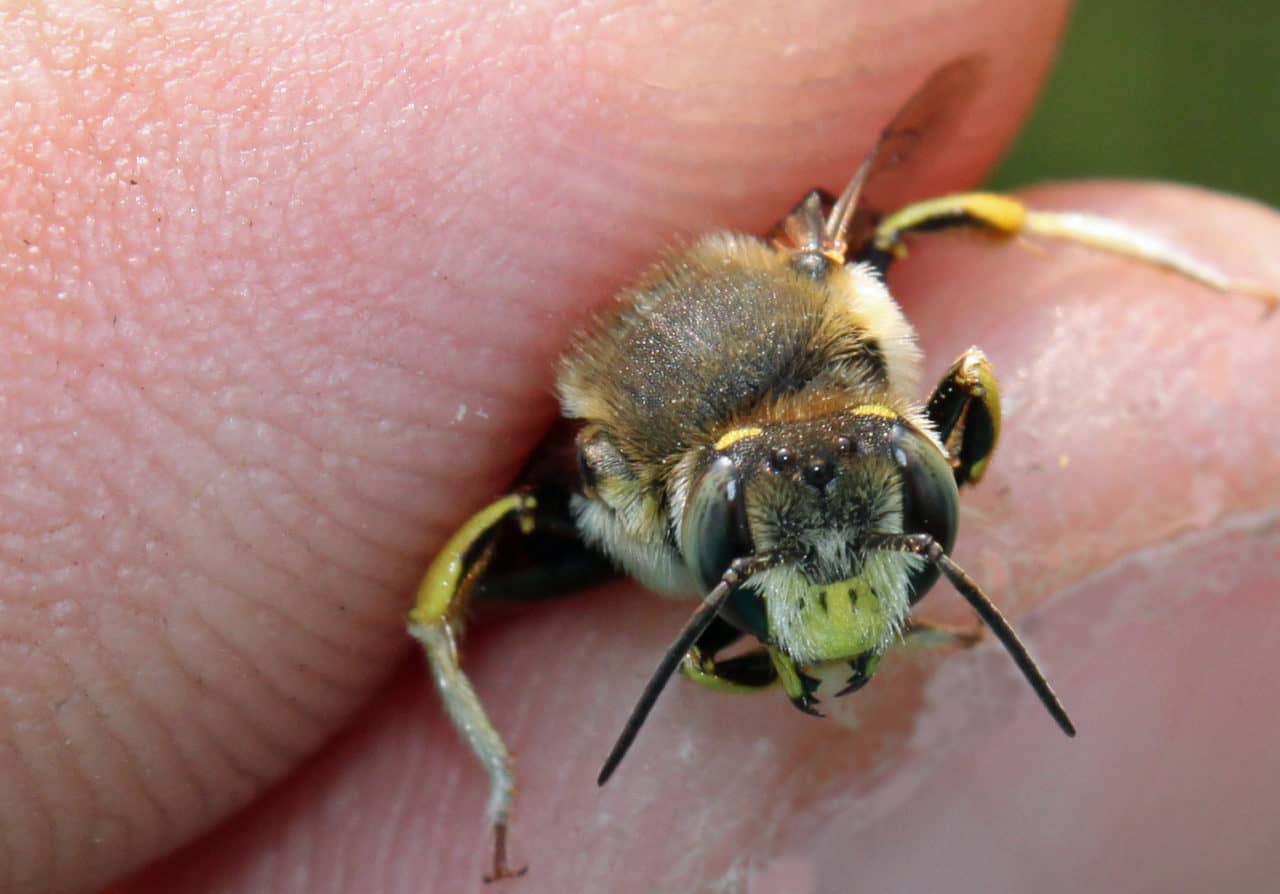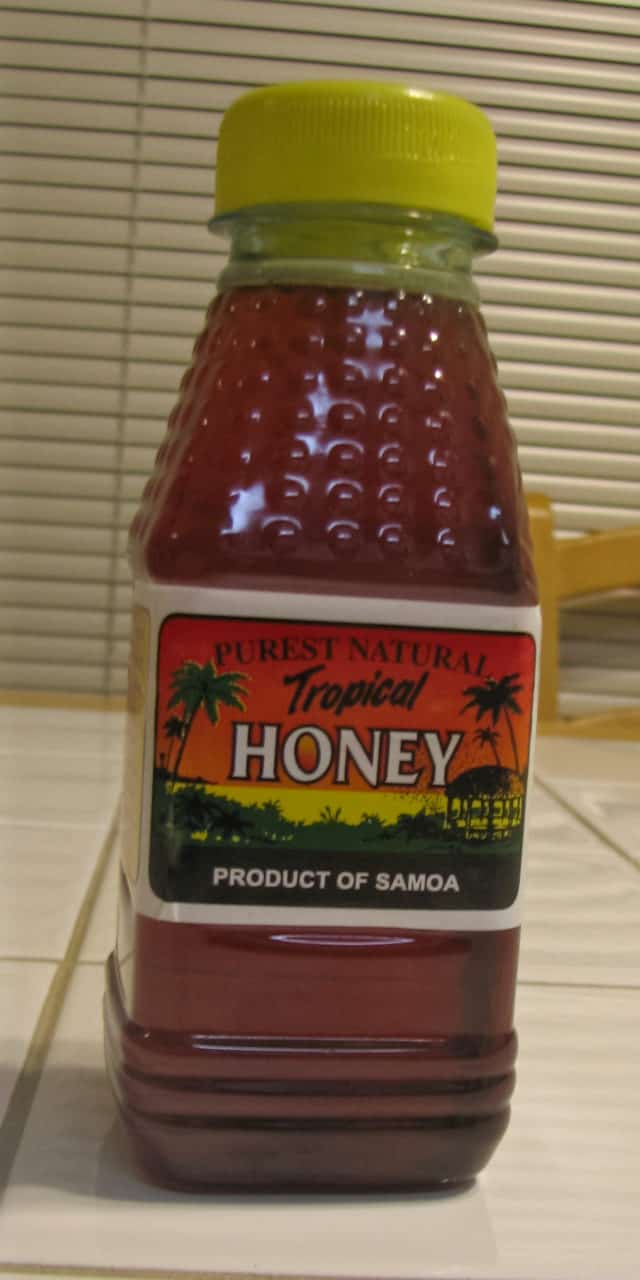Read farmdocDAILY's May 2011 article about Honey Bee Health and the Bee Informed Partnership http://www.farmdocdaily.illinois.edu/2011/05/honey_bee_health.html
How to collect bees
Before going out to collect bees there are a few things that you will need. Some of items are essential for collecting faster flying specimens. You should have small lidded containers to place the bees in. If you put small pieces of tissue in the container, those pieces give the bees something to hold on to and prevent the bees from becoming wet from regurgitated nectar. Using a net is the easiest method to collect bees. Try to avoid decapitating flower heads when collecting bees. One way to do this is to watch the direction that the bees fly away from the floral source and…
Samoan Honey
Dan Gordon, a hobby beekeeper and his wife, Becky, were kind enough to have me over for dinner last week. Besides cooking the best squash dish I ever had, he gave me a jar of honey. This was no ordinary honey. He purchased it from the only commercial beekeeper in the small country of Samoa in the South Pacific. The beekeeper has one of the best jobs you can do from home, owning the Tropical Honey Company. The jar label reads “This is pure natural tropical honey, with a unique flavor, is gathered from a variety of nectar sources found in the plantations and rainforests…
…Continued: Eggs, Larvae, Pupae, Queen
Over the last few weeks I have been writing about the importance of hive inspections and field notes covering some of the attributes of the hive one might choose to identify, observe, interpret, and record. I introduced the attributes in a blog that included an example of the field data sheets we use during our inspections. In the weeks following the initial blog, entitled “Field Notes and Hive Inspection”, I briefly touched on how to estimate a hives’ adult population in terms of frames of bees and how to spot eggs in the cells of the brood nest. The previous blog on eggs, larvae, pupae,…
Ocelli or “Simple eye”
The word ocelli is derived from the Latin word ocellus and means little eye. The ocelli are simple eyes that bees use to orientate themselves towards the sun. Located in a triangular shape are two dorsal ocelli and one central ocelli. They are located dorsally on the bees head (see images above for location). The ocelli are simple eyes, meaning they collect and focus light through a single lens. These simple eyes assist bees with sun orientation so they can navigate well during the day. Some bee species are crepuscular meaning they are active from dusk until dawn. These species have enlarged ocelli which detect…
When we turn to one another for counsel…
"When we turn to one another for counsel we reduce the number of our enemies" -Khalil Gibran We are in the thick of our fall sampling which started in late September and will go until the end of November. The idea behind the fall sampling is to give each of the sixteen beekeepers involved in the Bee Informed Partnership a “snapshot in time” of some of their hives before heading into winter. The hives will be reassessed and sampled again in January and February to see how they have come through the winter. Providing hive history through regular inspections and sample collection over the course…
California Bee Breeders Conference
Last week was the California Bee Breeder’s Association meeting. Mike, Rob and I attended and Dennis flew in from the East to go. I always enjoy the meetings in a large part because we get to watch all these independent personalities interact. We work with each beekeeper individually and get to know them, but only at the meetings do we really see this bigger image of how they all fit together. Sure, they disagree (and can be pretty vocal about it), but their goals are the same in that they all want to breed the best bees possible. If it helps their bees, they will…
Propolis and Bee Health
I talked a little about propolis, human health, how bees collect it here, but now I want to talk about propolis and bee health. If the bees can’t eat propolis, then why would they collect it? It is costly to bring back to the hive since it takes time and energy away from bees that could be foraging for nectar or pollen, so it must have some benefits. And it does! Mike Simone-Finstrom did his PhD work on looking at how propolis affects bee health. Bees living in a tree cavity coat the tree walls with what Tom Seeley dubbed a “propolis envelope.” The walls…
Wax Moth
I would like to talk about a pest previously mentioned in these blogs called the “Wax Moth.” This pest can be a problem all year round especially with stored equipment. Here are some ways to store comb, if you have any other ways to store your equipment please post in the comments. You can use PDB crystals (Dichlorobenzene) or moth balls as fumigants, be sure to air out a day or two before using them. A good friend of mine Tracy Alsedek from "Main Line Honey" keeps his equipment in a room with the light on 24/7 365 and he has no wax moth issues.…
Inhabitants when the colony dies or is clustered for the winter
Going into the winter, beekeepers place an entrance reducer on colonies to reduce robbing and also prevent other animals and insects from entering the hive. The entrance reducer is used to decrease the size of the entrance; it also gives the bees a smaller area to defend. Two common pests to deadout colonies are mice and chipmunks (in Pennsylvania). A mouse can chew drawn comb to nothing but bits and pull debris into the hive to make nests. The chipmunks use hive bodies as storage places to protect their food from the weather as shown in the image below. Using an entrance reducer can limit…


